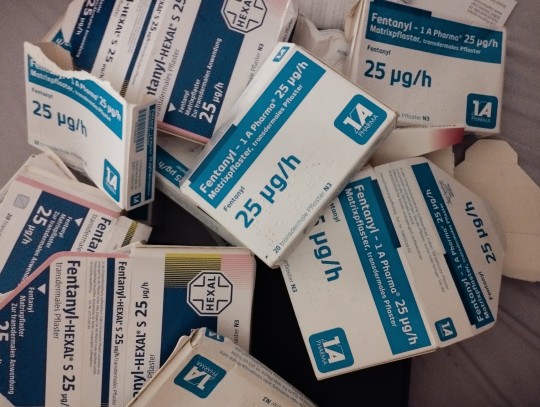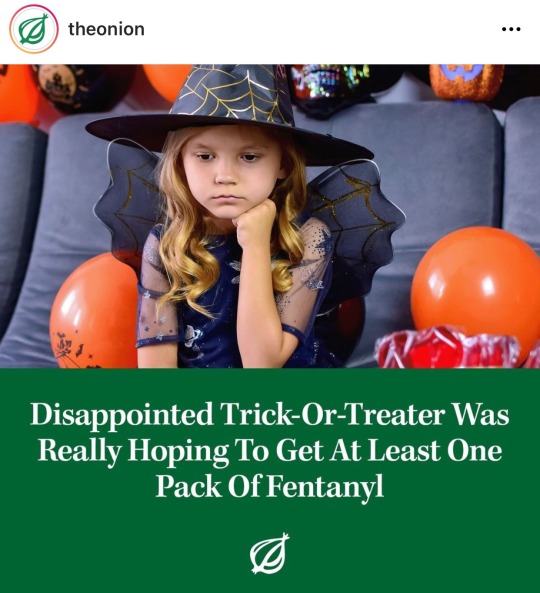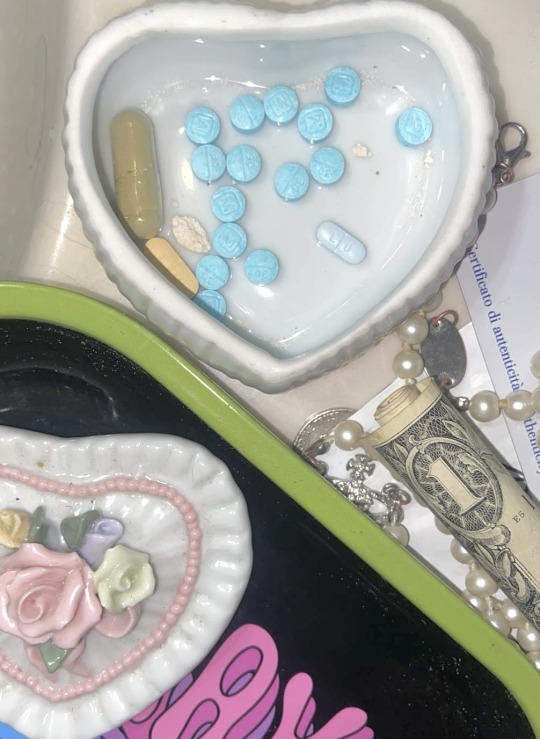#fentanyl
Text

Republicans have no actual morality. It's all theatre. Fentanyl is a prop.
385 notes
·
View notes
Link
Michelle Tandler – a former venture capitalist and wealthy “anti-San Francisco influencer“ – publicly bemoaned the lack of vigilante groups in the Bay area as she mused about whether or not fentanyl sellers should be lynched. As a researcher who studies drug prohibition, I responded by pointing out that not only is this kind of bloodthirsty rhetoric abhorrent, but drug sellers are, for the most part, workers entrapped in a violent system of marginalization, trying to survive where they have been denied functional access (often through systemic racism) to the licit job market. I pointed out, as my colleagues and I often do, that prohibition is in fact a root cause of most of the harm and chaos stemming from the drug trade. Legalization and regulation would save many lives. Even Twitter owner Elon Musk weighed in on this contentious discussion, surprising many with his stance in favour of the legalization of fentanyl. Despite this, I received dozens of threats and harassing messages for stating a position backed up by evidence.
[...]
Prohibition isn’t fighting the fentanyl crisis – it helped create it in the first place. The more the police crack down – while little is done to address the root question of why so many people want painkillers – the more they push it underground. Drug busts incentivize the flooding of the market with more compact, stronger drugs. More potent drugs are easier to transport and hide, but they’re also more dangerous as they’re difficult to properly dose. It happens every time prohibition is implemented, from the banning of alcohol in the U.S. in the 1920s and 30s, which had the unintended consequence of displacing beer and wine with the consumption of harder liquors, all the way up to the present day, where fentanyl has largely replaced heroin – which replaced morphine, which replaced opium (which was made illegal in Canada in 1908).
Despite countless aggressive attempts, no amount of surveillance or state violence has been able to stamp out drugs, which are available even in prisons, the most heavily guarded places on Earth. This is not to say we should give up the fight to keep people safe from overdoses. Quite the opposite. It means we need to let go of old, punitive, ineffective methods and start trying approaches that actually make practical sense. We have to respect the dignity of our fellow human beings who are struggling and in pain.
2K notes
·
View notes
Text

Screenshot only.
#gun violence#cartel violence#never trump#republican assholes#gun control#assault weapons ban#2nd amendment assholes#the nra is a terrorist organization#corporate greed#traitor trump#Republican butchers#Republican traitors#fentanyl#southern border
82 notes
·
View notes
Text
Under Donald Trump’s leadership, the West Wing operated more like a pill mill than the White House, at least according to a January report by the Department of Defense inspector general, which capped a six-year investigation into the administration’s medical practices.
But sources knowledgeable on the matter paint an even more dramatic image than that, describing the nation’s highest office as “awash in speed,” reported Rolling Stone.
Common pills included modafinil, Adderall, fentanyl, morphine, and ketamine, according to the Pentagon report. But other, unlisted drugs—like Xanax—were equally easy to come by from the White House Medical Unit, according to sources that spoke to the magazine.
At least two senior staffers would regularly mix the depressant with alcohol, a potentially life-threatening combo, to deal with the stress of working with a highly erratic boss.
“You try working for him and not chasing pills with alcohol,” one source told Rolling Stone.
While other presidents were known to take a mix of drug cocktails to fight off back pain (like JFK) or bad moods (like Nixon), no previous administrations matched the level of debauchery of Trump’s, whose in-office pharmacists unquestioningly handed out highly addictive substances to staffers who needed pick-me-ups or energy boosts—no doctor’s exam, referral, or prescription required.
“It was kind of like the Wild West. Things were pretty loose. Whatever someone needs, we were going to fill this,” another source said.
Ultimately, the unmitigated access to controlled substances fostered an environment that would have been considered highly illegal and problematic anywhere else in the nation—if it weren’t inside the very office that helps craft those regulations.
“Is it being done appropriately or legally all the time? No. But are they going to get to that end result that the bosses want? Yeah,” said another, referring to the high demands of the office.
Meanwhile, pharmacists described an atmosphere of fear within the West Wing, claiming they would be “fired” if they spoke out or would receive negative work assignments if they didn’t hand pills over to staffers.
#us politics#news#republicans#donald trump#conservatives#trump administration#gop#2024#Department of Defense inspector general#department of defense#rolling stone magazine#White House Medical Unit#prescription pills#modafinil#Adderall#fentanyl#morphine#ketamine#Xanax
110 notes
·
View notes
Photo

In 2022, fentanyl was responsible for over 200 deaths every day in the US.
by u/USAFacts_Official
157 notes
·
View notes
Text


106 notes
·
View notes
Text

His corrupt fake doctor Ronny Jackson.
#republican assholes#traitor trump#crooked donald#republican values#resist#drug addict Trump#dr Ronny Jackson#Adderall#fentanyl
59 notes
·
View notes
Text
I want to be able to have an unlimited supply of opioids. Please. I just want to forever feel that calming, blissful warmth. I like feeling all my worries go away. I don't care about recovering at this point. My life sucks and I wanna get fucked up.
68 notes
·
View notes
Text

#og#narcotics#benadryl#fentanyl#cocaine#methamphetamine#codeine#LSD#heroin#aderall#fluoxetine#ecstasy#morphine#ketamine#airshot
76 notes
·
View notes
Text

Right winger, quintessential white supremacist, dealing in fentanyl. From red state Missouri.
White men commit the crimes, then blame migrants and immigrants.
458 notes
·
View notes
Text
A "secure" system can be the most dangerous of all

Two decades ago, my life changed forever: hearing Bruce Schneier explain that “security” doesn’t exist in the abstract. You can only be secure from some threat. A fire alarm won’t protect you from burglaries. A condom won’t protect you from mass shootings. It seems obvious, but how often do we hear about “security” without any mention of who is being made secure, and from which threat?
Take the US welfare system. It is very “secure” in that it is hedged in by a thicket of red-tape, audits, inspections and onerous procedures. To get food stamps, housing vouchers, or cash aid, you must navigate a Soviet-grade bureaucratic system of Kafkaesque proportions. Indeed, one of the great ironies of the post-Cold War world is that the USA has become a “Utopia Of Rules” (as David Graeber put it), subjecting everyday people to the state-run bureacracies that the USAUSAUSA set endlessly ridiculed the USSR for:
https://memex.craphound.com/2015/02/02/david-graebers-the-utopia-of-rules-on-technology-stupidity-and-the-secret-joys-of-bureaucracy/
(The right says it wants to “shrink the US government until fits in a bathtub — and then drown it” — but not the whole government. They want unlimited government bloat for that part of the state that is dedicated to tormenting benefits claimants, especially if its functions are managed by a Beltway Bandit profiteer who bills Uncle Sucker up the wazoo for rubber-stamping “DENIED” on every claim.)
The US benefits system has a sophisticated, expensive, fully staffed anti-fraud system — but it’s a highly selective form of anti-fraud. The system is oriented solely to prevent fraud against itself, with no thought to protecting benefits recipients themselves from fraud.
And those recipients — by definition the poorest and most vulnerable among us — are easy pickings for continuous, ghastly, eye-watering acts of fraud. These benefits are distributed via prepaid debit cards — EBT Cards — that lack the basic security measures that every other kind of card has had for years. These are simple magstripe cards, lacking basic chip-and-pin defenses, to say nothing of contactless countermeasures.
That means that fraudsters can — and do — install skimmers in the point-of-sale terminals used by benefits recipients to withdraw their cash benefits, pay for food using SNAP (AKA Food Stamps), and receive other benefits.
It’s impossible to overstate how widespread these skimmers are, and how much money criminals make by stealing from poor people. Writing for Businessweek, Jessica Fu describes the mad scramble benefits recipients go through every month, standing by ATMs at midnight on the night of the first of every month in hopes of withdrawing the cash they use to pay for their rent and utility bills before it is stolen by a crook who captured their card number with a skimmer:
https://www.bloomberg.com/news/features/2023-06-28/ebt-theft-takes-millions-of-dollars-from-the-neediest-americans
One of Fu’s sources, Lexisnexis Risk Solutions’s Haywood Talcove, describes these EBT cards as having the security of a “glorified hotel room key.” He recounts how US police departments saw a massive explosion in EBT skimming: from 300 complaints in January 2022 to 18,000 in January 2023.
The skimmer rings are extremely well organized. The people who install the skimmers — working in pairs, with one person to distract the cashier while the other quickly installs the skimmer — don’t know who they work for. Neither do the people who use cards cloned from skimmer data to cash out benefits recipients’ accounts. When they are arrested, they refuse to turn on their immediate recruiters, fearing reprisals against their families.
These low-level crooks stroll up to ATMs and feed a succession of cloned cards into them, emptying account after account. Or they swipe cards at grocery checkouts, buying cases of Red Bull and other easily sold grocery products with some victim’s entire SNAP balance.
Some police agencies are pursuing these criminal gangs and trying figure out who’s running them, but the authorities who issue SNAP cards are doing little to nothing to stop the pipeline at their end. Simply upgrading SNAP terminals to chip-and-pin would exponentially raise the cost and complexity that thieves incur.
Indeed, that’s why every other kind of payment card uses these systems. How is it that these systems were upgraded, while SNAP cards remain in mired in 20th century “glorified hotel room key” territory? Well, as our friends on the right never cease to remind us: “incentives matter.”
When your credit card gets cloned, it’s your banks and credit card company that pays for the losses, not you. So the banks demanded (and funded) the upgrade to new anti-fraud measures. By contrast, most states have no system for refunding stolen benefits to skimmers’ victims.
In other words, all of the anti-fraud in the benefits system is devoted to catching benefits cheating — a phenomenon that is so rare as to be almost nonexistent (1.54%), notwithstanding right wingers’ fevered, Reagan-era folktales about “welfare queens”:
https://blog.gitnux.com/food-stamp-fraud-statistics/
Meanwhile, the most widespread and costly form of fraud in the benefits system — fraud perpetrated against benefits recipients — is blithely ignored.
Really, it’s worse than that. In deciding to protect the welfare system rather than welfare recipients, we’ve made it vastly harder for benefits claimants who’ve been victimized by fraudsters to remain fed and sheltered. After all, if we made it simple and straightforward for benefits recipients to re-claim money that was stolen from them, we’d make it that much easier to defraud the system.
“Security” is always and forever a matter of securing some specific thing, against some specific risk. In other words, security reflects values — it reveals whose risk matters, and whose doesn’t. For the American benefits system, risks to the system matter. Risks to people don’t.
It’s not just the welfare system that prioritizes its own risks against the people it exists to serve. Think of the systems used to fight drug abuse in clinical settings.
Medical facilities that use or dispense powerful pain-killers have exquisitely tuned, sophisticated, frequently audited security systems to prevent patients from tricking their doctors or pharmacists into administering extra drugs (especially opioids). “Extra” in this case means “more drugs than are strictly necessary to manage pain.”
The rationale for this is only incidentally medical. Someone who gets a little too much painkiller during a medical procedure or an acute pain episode is not at any particular risk of enduring harm — the risks are minor and easily managed (say, by keeping a patient in bed a little longer while they recover from sedation).
The real agenda here is preventing addiction and abuse by addicted people. There’s a genuine problem with opioid abuse, and that problem does have its origins in overprescription. But — crucially — that overprescription wasn’t the result of wimpy patients insisting on endless painkillers until they enslaved themselves to their pills.
Rather, the opioid epidemic has its origins in the billionaire Sackler crime family, whose Purdue Pharma used scientific fraud, cash incentives, and other deceptive practices to trick, coerce, or bribe doctors into systematically overprescribing their Oxycontin cash cow, even as they laundered their reputation with showy charitable donations:
https://pluralistic.net/2021/07/12/monopolist-solidarity/#sacklers-billions
The Sacklers got to keep their billions — and people undergoing painful medical procedures or living with chronic pain are left holding the bag, subject to tight pain-med controls that forces them to prove — through increasingly stringent systems — that they truly deserve their medicine.
In other words, the beneficiary of the opioid control system is the system itself — not the patients who need opioids.
There’s an extremely disturbing — even nightmarish — example of this in the news: the Yale Fertility Clinic, where hundreds of women endured unimaginably painful egg harvesting procedures with no anaesthesia at all.
These women had complained for years about the pain they suffered, and many had ended up needing emergency care after the fact because of traumatic injuries caused by undergoing the procedure without pain control. But the doctors and nurses at the Yale clinic ignored their screams of pain and their post-operative complaints.
It turned out that an opioid-addicted nurse had been swapping the fentanyl in the drug cabinet for saline, and taking the fentanyl home for her own use.
This made national headlines at the time, and it is the subject of “The Retrievals,” a new New York Times documentary series podcast:
https://www.nytimes.com/2023/06/22/podcasts/serial-the-retrievals-yale-fertility-clinic.html
If the pain medication management system was designed to manage pain, then these thefts would have been discovered early on. If the system was designed so that anyone who experienced pain was treated until the pain was under control, the deception would have been uncovered almost immediately.
As Stafford Beer said, “the purpose of any system is what it does.” The pain medication management system was designed to manage pain medication, not pain itself.
The system was designed to be secure from opioid-seeking addicted patients. It was not designed to make patients secure from pain. Its values — our values, as a society — were revealed through its workings.

If you’d like an essay-formatted version of this thread to read or share, here’s a link to it on pluralistic.net, my surveillance-free, ad-free, tracker-free blog:
https://pluralistic.net/2023/07/13/whose-security/#for-me-not-thee

[Image ID: A down-the-barrel view of a massive, battleship-gray artillery piece protruding from the brick battlement of a fortress. From the black depths of the barrel shines a red neon 'EBT' sign.]

Image:
Bjarne Henning Kvaale (modified)
https://commons.wikimedia.org/wiki/File:Oscarsborg_28cm_Krupp_cannon_4_-_panoramio.jpg
CC BY-SA 3.0
https://creativecommons.org/licenses/by-sa/3.0/deed.en
#pluralistic#incentives matter#chip and pin#security#yale#drugs#war on drugs#war on some drugs#fertility clinic#fentanyl#opioids#skimmers#ebt#food stamps#finance#theft#fraud#social safety net#crime#schneier#indifference#luddism
214 notes
·
View notes
Text

68 notes
·
View notes





